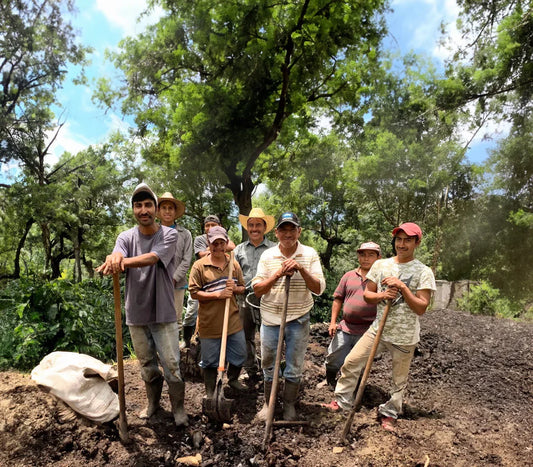
Breaking Barriers: 3 Reasons for the Recent Surge of Latino Representation in US Colleges
The stats are in. And we love them.
Over the past decade, the number of Hispanic high school graduates enrolling in college has risen steadily. In 2020 alone, 50% of Hispanic high school graduates enrolled in college, compared to just 32% in 2000 (Pew Research Center).
Jump to:
There is no question that the recent successes of the Latino population in top US colleges is an admirable achievement. It has taken years, if not decades, for our communities to even enter the higher education playing field, never mind get picked for the team! This remarkable shift is bound to open up opportunities for generations to come. But the question remains: why has it taken this long for the Latino population to thrive in top US colleges? And will this positive trend continue?
Increased Accessibility, Resources and Support
The increasing presence of Latinos in top US colleges can be attributed, in part, to enhanced access and improved support. With a shift towards inclusivity, universities have become more eager to cultivate a holistic, diverse student body. Meaning that, in recent years, institutions have sought to actively recruit individuals from diverse backgrounds, opening doors that have previously been closed to Latino communities. This shift has not been sudden. It has taken decades: The National Center for Education Statistics shows the beginnings of this incremental change, with the percentage of Hispanic undergraduates enrolled in degree-granting institutions increasing by just 9% from 2000 to 2018.
However, it’s not just about an active recruitment policy, supportive programs and resources also play a pivotal role in the academic success of Latino students in top US colleges. These initiatives aim to address the unique challenges faced by our communities, ensuring Latino students have the necessary tools and guidance to thrive in higher education.
Mentorship programs and scholarships specifically tailored for Latino students have also surged in recent years, providing financial assistance and guidance. The former of which has been a major obstacle for Latino students in the past - even in a scenario where families have been able to afford tuition, living expenses and other academic costs often weigh heavy on the students.
The exemplar program is that of the Hispanic-Serving Institutions (HSIs). HSIs are colleges and universities where Hispanic enrollment comprises at least 25% of the total student population. These institutions receive federal funding to enhance educational opportunities for Latino students - these include top universities such as University of Santa Barbara (UCSB), University of Arizona (UA), and University of Texas at El Paso (UTEP). According to Excelencia in Education, there are currently over 500 HSIs across the United States. Data from the Hispanic Association of Colleges and Universities (HACU) indicates that students attending HSIs have higher graduation rates compared to their counterparts in non-HSIs.
The positive impact of these programs for our young people is undeniable - and long may the trend continue!

Strong Community Support and Determination
What we cannot overlook is the power of our own Latino values in this fight for access to higher education. Our strong support, network, and determination have undoubtedly contributed to this positive shift. Juanita García, a first generation Latino student at Stanford University reflects on her own journey. "My journey as a first-generation Latino student at a top US university has been both challenging and rewarding. I carry the weight of my family's sacrifices on my shoulders, knowing that their dreams and aspirations are intertwined with my own. Every success I achieve is a testament to their unwavering belief in me. I am proud to break barriers and set an example for future generations, proving that with hard work, resilience, and support, anything is possible."
The determination and perseverance of our Latino Community is precisely what makes our younger generations so successful - the transformative power of education and unstoppable drive exhibited by the Latino population in top US colleges is precisely what pioneers generational revolution.

What Does the Future Hold for Latino Students?
Dr. Patricia Gándara, a professor of education at UCLA, emphasizes the importance of representation: "When students see others like themselves succeeding in college, it increases their belief that they can do it too."
Beyond family support and cultural values that play a crucial role in motivating Latino students to pursue a higher education and excel academically, the network of successful Latinos giving back to the community has been the crux of success. And we have every belief that they will inspire future Latinos for generations to come.
This visibility is cultivated through founder events, Latinos in industry, Latinos providing and sharing resources - including mentorship, college readiness programs - and networking opportunities. By continuing to foster a sense of belonging and solidarity, young people in our communities are inspired to overcome what were historically considered as obstacles to achieve academic goals and milestones.
This is to note that the thriving Latino population in top US colleges is a result of overcoming years of intergenerational barriers: increased access and representation, supportive programs and resources, and strong community support and determination. By embracing diversity and providing targeted assistance, higher education institutions and organizations have paved the way for Latino students to achieve remarkable success. As we celebrate these achievements, it is crucial to continue advocating for equal opportunities and fostering an inclusive environment that empowers students from all backgrounds to excel.


